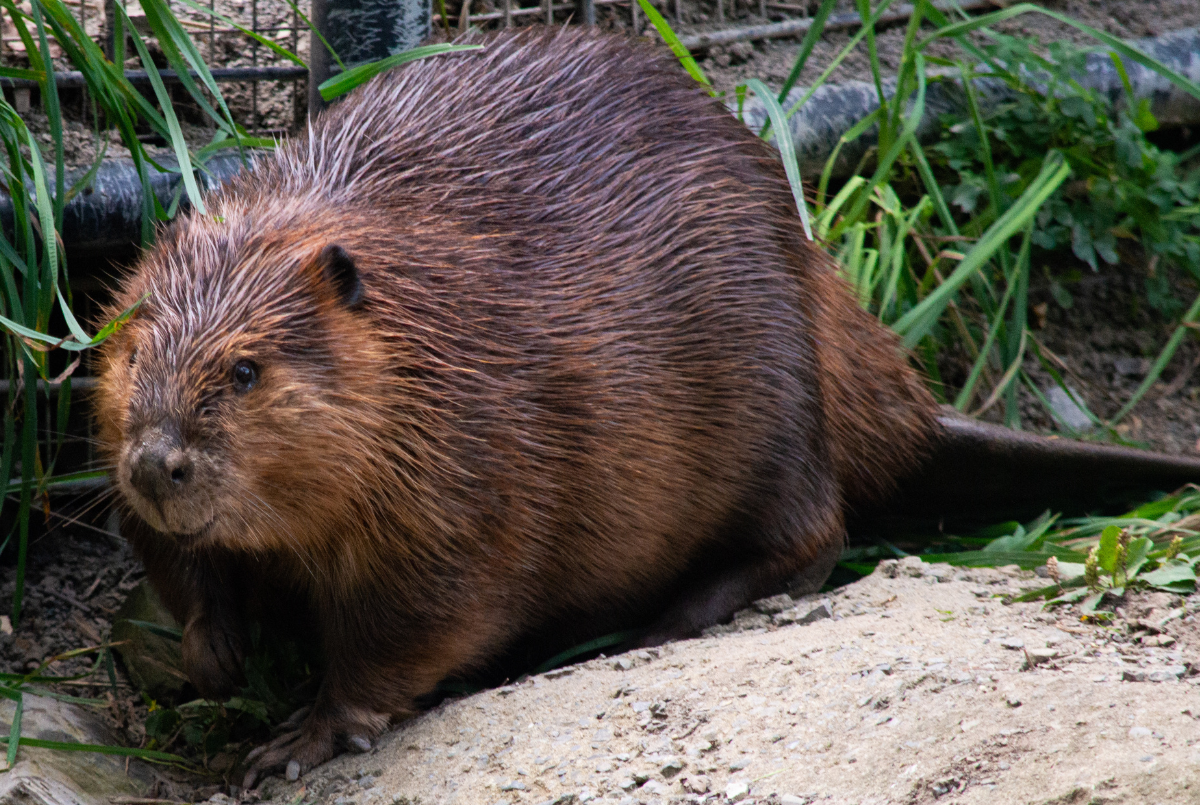North American Beaver

Basic Information:
Scientific Name: Castor canadensis
Habitat: North American beavers can be found in wooded areas throughout the United States, Canada, and northern Mexico.
Diet: North American beavers primarily eat tree bark and cambium.
Size: 1 to 1.5 feet tall / 3 to 4 feet long
Weight: 24 to 71 pounds
Lifespan: 10.6 years according to AZA Species Survival Statistics
Distribution Map:
I.U.C.N. Conservation Status:

What does this mean?
Least Concern – a species determined by the International Union for Conservation of Nature (I.U.C.N.) to be pervasive, abundant, and thriving.
About North American Beavers:
Beavers are the largest rodent in North America and can be found across marshlands throughout the entire continent. They are the only species on the entire planet that are known for building dams to block waterways and create ponds. This is important for the health of the ecosystem, and also act as landscapes for the beavers to them build lodges in. These protective shelters are built partially in the water and can only be accessed through swimming up in to them. All of these construction activities require sticks and logs which beavers obtain by gnawing down trees in the area around them. They also have very smooth and waterproof fur that allows them to easily navigate between the land and water. This fur was very popular throughout the early days of America and beavers were almost hunted to extinction due to the high demand for their pelts among Europeans. Thankfully, hunting eventually slowed and beavers have since made a comeback.
Did You Know?!
- Beaver’s front teeth are orange because their enamel contains iron to strengthen them and allow them to self sharpen as they gnaw on wood.
- Beavers can shut their nose and ear valves to keep out water while submerged AND they have a set of transparent eyelids that function as goggles so that they can see underwater. These traits allow them to stay below the surface for 15 minutes without surfacing.
- Beaver castoreum (or scent glands) were used as a tincture in some perfumes and occasionally as a food additive into the early 1900s.
